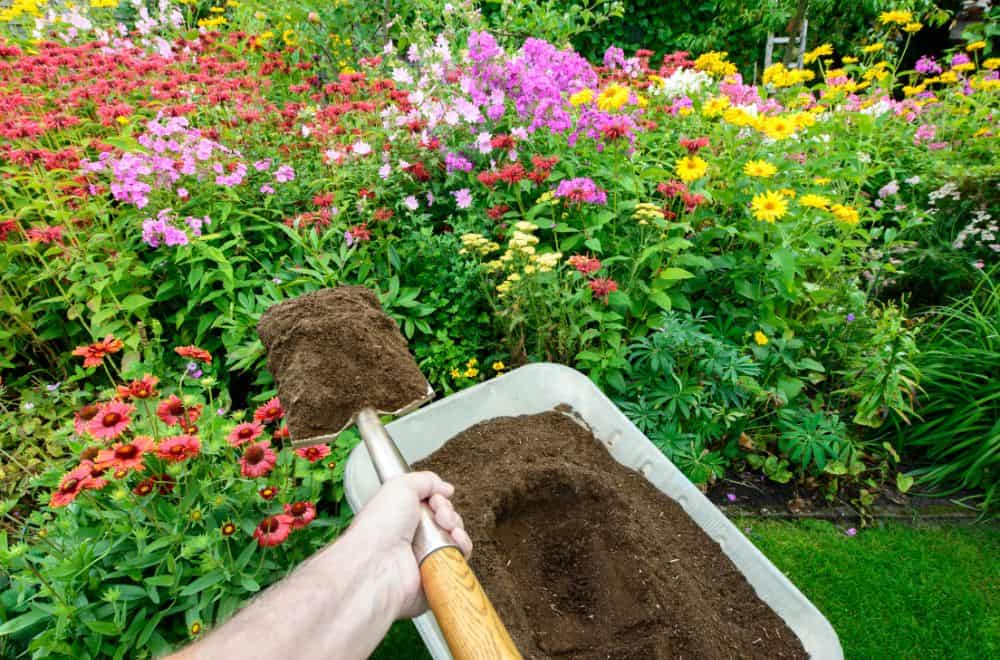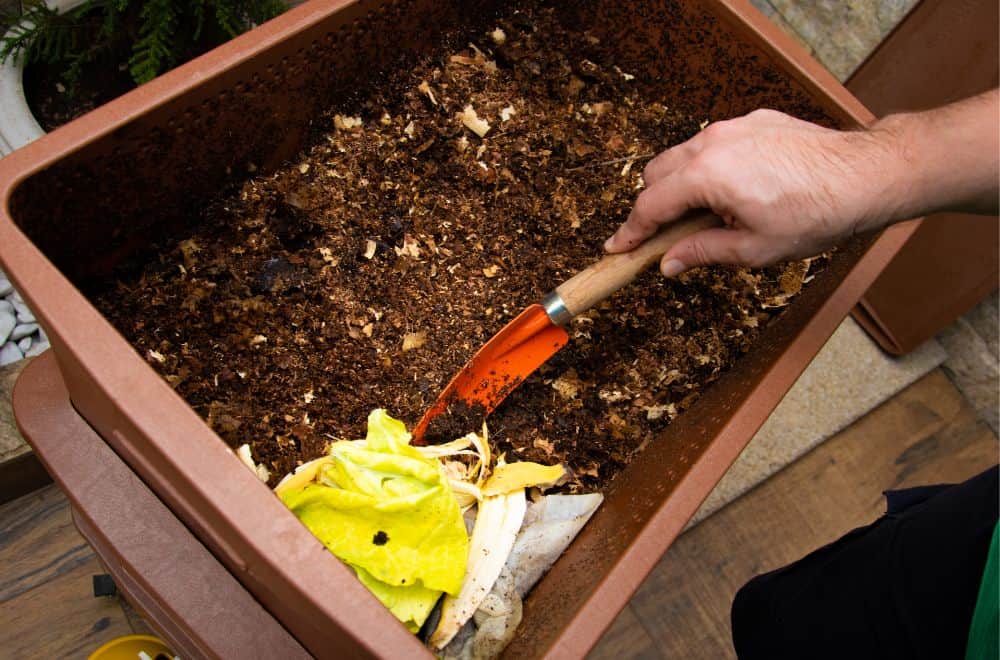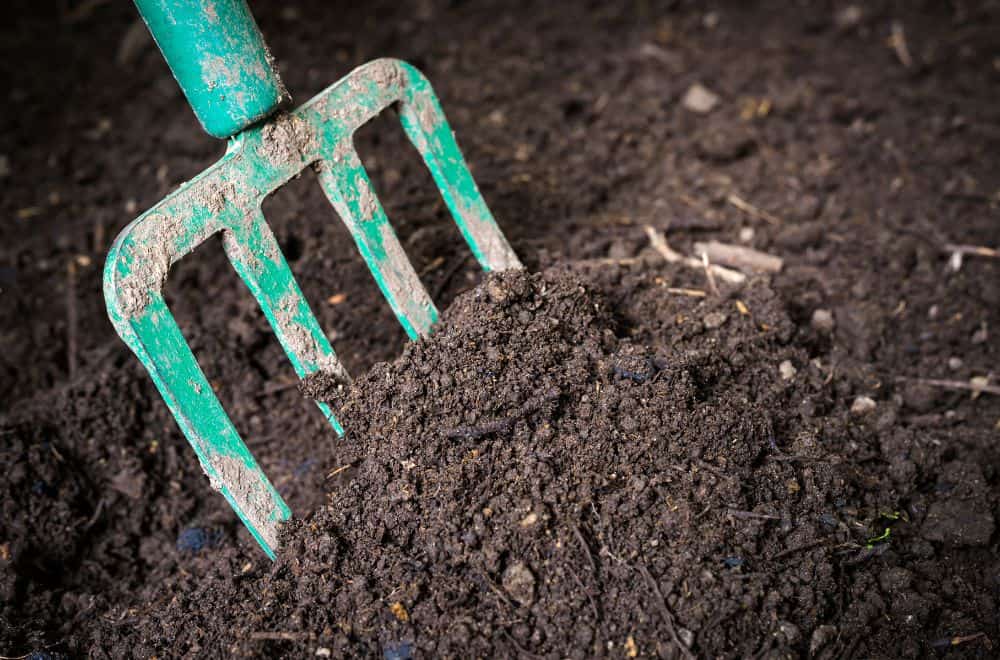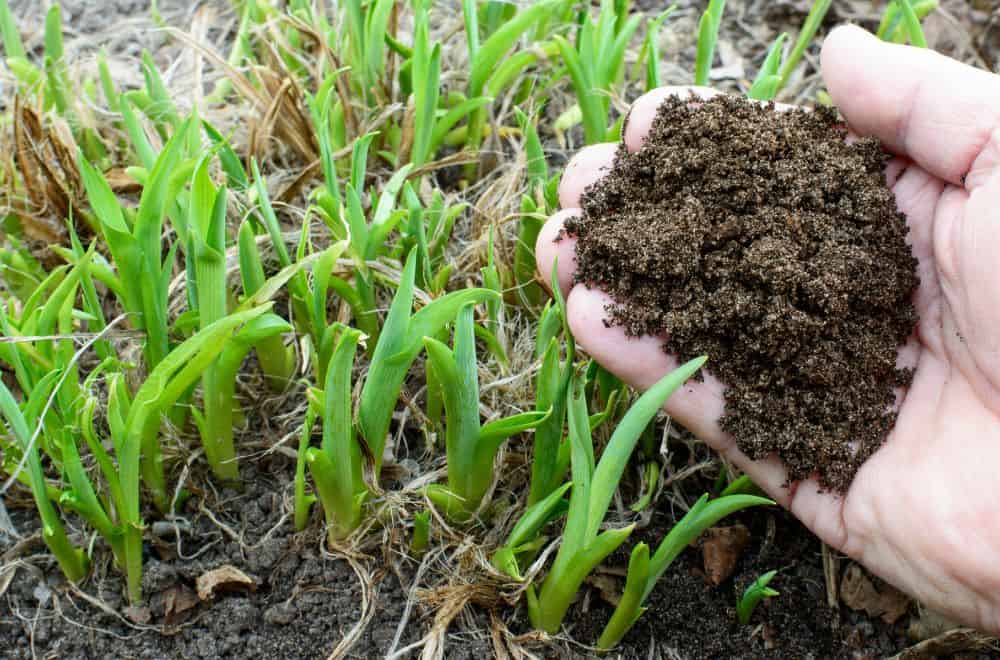When it comes to landscaping, gardening, and lawn care, choosing the right materials for the job are important. However, few homeowners think about the downside of going to a store and buying what they need.
Not only are you paying a high price for the materials, but you are also getting products that are inferior to the types of materials that you can make on your own to improve soil quality with composting.
Although you may still need to add layers of topsoil when your lots are loamy, rocky, or otherwise barren, compost is the superior material for improving soil quality in the aggregate.
What Are the Advantages and Disadvantages of Topsoil?

Topsoil can be expansive at more than $20 per bag. Although most topsoil can be aerated and mixed with peat moss, vermiculite, perlite, and worm castings to stretch it, you will find that these materials are likewise expensive. Although it is tempting to buy topsoil when you are potting plants, you may be able to use the topsoil in your own backyard by enriching it with compost.
When you are conditioning the soil yourself, you want to make sure that it has the ideal 50/50 mix of peat moss and topsoil for most planting applications to break up the clay and denseness of topsoil. The vermiculite is there to both aerate the soil and to retain water. Perlite doesn’t retain water like vermiculite but is preferred by some growers because it is a natural volcanic glass.
Vermiculite contains a dangerous form of asbestos and can cause dreaded lung cancer diseases like mesothelioma with enough exposure. Vermiculite is often mined near asbestos and contaminated as a result. Vermiculite can also be found in home insulation around water pipes.
When conditioning our topsoil, you should also get a pH meter to check the balance in the soil. You will often want to add some lime for nutrient and pH purposes. It is all relative to the type of plants that you are growing. The average range for plants is in the acidic range, between 5.5 and 7 pH.
For some plants, such as tomatoes, you will want to ensure that is closer to 7 than 5. Tomatoes are one plant that is particularly fond of lime. You will achieve excellent results when you grow your tomatoes in a perfectly balanced and lime aerated soil.
The dark side of topsoil is that even the filtered varieties have no guarantee against weed seeds. Therefore, you should not regularly add topsoil to your lawn because you risk weeds cropping up. This is especially true if you purchase some of the more economical varieties.
You will also find that some topsoil varieties are just good for potting plants or growing grass. The most desirable grass seed out on the market is specially designed through genetical modification to produce those turf-builder results that you might see on a golf course or a soccer field.
If you are going to spend a hefty price for this seed to get a premium lawn, you should test out any potting soils with other plants before making any investment. This is the only way to protect yourself from a costly mistake because there are no guarantees other than the brand’s reputation in your experience.
What Are the Advantages and Disadvantages of Compost?

Compost is the choice of gardening material for those who have the means to produce it. It is a nutritious additive that can be fed into the soil that is produced from food scraps, cardboard, paper, dried leaves, vegetable matter, and the organic leaves that pile up on your lawn. Compost can also be spread on top of the lawn and used as a replacement for mulch. The biggest drawback to creating compost is the off-putting odor of rotting garbage that emanates from this concoction. Another big drawback is the potential to draw critters such as rats to nest and feed on the waste of the compost.
For this reason, it is better to purchase a compost bin that you can seal. A bin that heats the compost slightly to encourage the proper type of microbial growth to digest the waste is also suggested. If you simply use worms in your compost bin to help break down the material faster, you can cut the 6-month wait for natural composting methods in half. This technique is called vermicomposting.
It is mainly fungi and bacteria concentrations that are already in your soil that aid in breaking down the plant matter. When you return these microbes back into your soil where they came from, no harm is possible. There is a dispute over whether foreign microbes of compost purchased from another region may have a harmful effect.
You can also use the compost tea as a liquid fertilizer between turning over the topsoil. This is done by simply soaking the compost into some ordinary water and then draining off the water into your watering can when it is ready. Making compost also helps eliminate waste being tossed into landfills and helps the environment.
Compost vs Topsoil

When it comes down to it, the topsoil has its place but has a lot of disadvantages. The compost is far more useful for enriching your soil than the chemical fertilizers that are found in many commercial topsoil brands. These topsoil brands often have a weed-killer mixed in with them and other chemicals that can toxify your soil. A compost may require you to do a little more work in conditioning your soil but will save you so much money that it is worth your time if you are working on large areas.
Conclusion
Compost is nature’s homemade fertilizer that is completely non-toxic and safe to use for any application around your home. If you can find a compost bin that diminishes the stench and keeps out critters, you should be happy with the results. The classic controversy between compost vs topsoil, therefore, falls strongly on the side of compost if you have the room or proper equipment.

Leave a comment